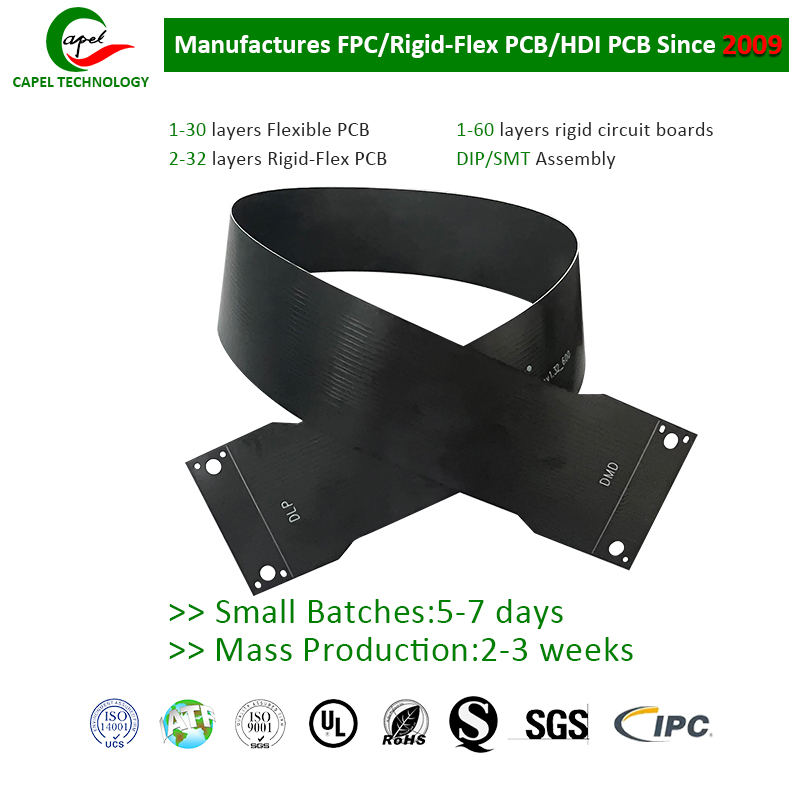As technology continues to advance and equipment becomes more complex, ensuring a stable power supply becomes increasingly important. This is especially true for 6-layer PCBs, where power stability and noise issues can severely impact sensitive signal transmission and high-voltage applications. In this blog post, we’ll explore various strategies to effectively address these issues.
1. Understand power supply stability:
Power supply stability refers to the ability to provide consistent voltage and current to electronic components on a PCB. Any fluctuations or changes in power may cause these components to malfunction or be damaged. Therefore, it is critical to identify and correct any stability issues.
2. Identify power supply noise problems:
Power supply noise is unwanted changes in voltage or current levels on a PCB. This noise can interfere with the normal operation of sensitive components, causing errors, malfunctions, or degraded performance. To avoid such problems, it is critical to identify and mitigate power supply noise issues.
3. Grounding technology:
One of the main causes of power supply stability and noise problems is improper grounding. Implementing proper grounding techniques can significantly improve stability and reduce noise. Consider using a solid ground plane on the PCB to minimize ground loops and ensure a uniform reference potential. Additionally, using separate ground planes for the analog and digital sections prevents noise coupling.
4. Decoupling capacitor:
Decoupling capacitors strategically placed on the PCB absorb and filter out high-frequency noise, improving stability. These capacitors act as local energy reservoirs, providing instantaneous power to components during transient events. By placing decoupling capacitors close to the IC’s power pins, system stability and performance can be greatly improved.
5. Low impedance distribution network:
Designing low-impedance power distribution networks (PDNs) is critical to reducing power supply noise and maintaining stability. Consider using wider traces or copper planes for power lines to minimize impedance. Additionally, placing bypass capacitors near the power pins and ensuring short power traces can further enhance the effectiveness of the PDN.
6. Filtering and shielding technology:
To protect sensitive signals from power supply noise, it is critical to use appropriate filtering and shielding techniques. Use a low-pass filter to attenuate high-frequency noise while allowing the desired signal to pass through. Implementing shielding measures such as ground planes, copper cladding, or shielded cables can help reduce noise coupling and interference from external sources.
7. Independent power layer:
In high voltage applications, it is recommended to use separate power planes for different voltage levels. This isolation reduces the risk of noise coupling between different voltage domains, ensuring power supply stability. Additionally, the use of appropriate isolation technology, such as isolation transformers or optocouplers, can further improve safety and minimize noise-related issues.
8. Pre-simulation and layout analysis:
Utilizing simulation tools and conducting pre-layout analysis can help identify potential stability and noise issues before finalizing the PCB design. These tools evaluate power integrity, signal integrity, and electromagnetic compatibility (EMC) issues. By using simulation-driven design techniques, one can proactively address these issues and optimize PCB layout to enhance performance.
In conclusion:
Ensuring power supply stability and minimizing power supply noise are key considerations for successful PCB design, especially in sensitive signal transmission and high voltage applications. By adopting appropriate grounding techniques, utilizing decoupling capacitors, designing low-impedance distribution networks, employing filtering and shielding measures, and conducting adequate simulation and analysis, these issues can be effectively addressed and a stable and reliable power supply achieved. Keep in mind that the performance and longevity of a well-designed PCB depend heavily on attention to power supply stability and noise reduction.
Post time: Oct-03-2023
Back







